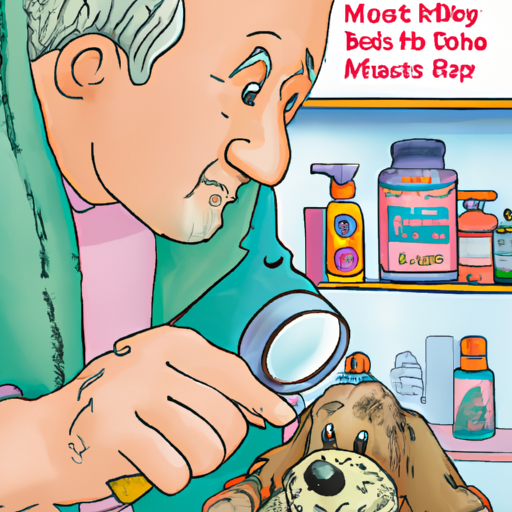Identifying the Problem
Your furry friend has been scratching more than usual. It seems that something is bothering them, and you suspect it might be mites.
Mites are tiny parasites that can wreak havoc on a dog’s skin. They’re not easy to see with the naked eye, but the symptoms they cause are hard to miss:
- Constant scratching
- Redness and inflammation
- Scaly or crusty skin
- Hair loss, particularly around the ears and elbows
If you notice these symptoms in your dog, it’s time to take action.
Consultation with a Vet
Before starting any treatment, it’s vital to consult with a vet. They can confirm whether mites are indeed the problem and guide you on the best course of action.
Remember, other conditions can cause similar symptoms. So, getting a proper diagnosis is essential.
Your vet might use the following tests to confirm the presence of mites:
| Test | Description |
|---|---|
| Skin Scraping | A sample of your dog’s skin is collected and examined under a microscope. |
| Ear Swab | This test is used if your dog has symptoms in the ear. |
| Fecal Exam | Your vet may recommend this if they suspect mites are causing gastrointestinal issues. |
Treatment Options
Once your vet confirms the diagnosis, they will recommend a treatment plan. This might include:
- Topical Treatments: These are applied directly to your dog’s skin. They kill mites and soothe inflammation.
- Oral Medications: These are given by mouth and work by killing mites from the inside.
- Injectable Medications: These are typically used for severe infestations. They’re administered by a vet.
It’s important to follow your vet’s instructions carefully. Improper use of these treatments can lead to resistance and make the infestation harder to treat.
Preventing Future Infestations
Preventing mite infestations is just as important as treating them. Here are some steps you can take:
- Regularly clean your dog’s bedding and toys.
- Keep your dog’s living area clean and well-ventilated.
- Use preventive treatments as recommended by your vet.
Caring for Your Dog During Treatment
Your dog might feel uncomfortable during the treatment period. As a caregiver, you can help them feel better by:
- Providing plenty of fresh water and a balanced diet to boost their immune system.
- Giving lots of love and attention.
- Avoiding activities that might irritate their skin, like bathing or rough play.
FAQ
Q: Can I catch mites from my dog?
A: Some types of mites can be transmitted to humans, but this is rare.
Q: How long does it take for the treatment to work?
A: It can take several weeks for the treatment to fully eliminate the mites.
Q: Can mites come back after treatment?
A: Yes, mites can come back if your dog is exposed to them again. Regular preventive care can help keep this from happening.
Q: How can I stop my dog from scratching?
A: Your vet might recommend a special shampoo or cream to soothe your dog’s skin and reduce itching.
Remember, your dog is counting on you to help them feel better. With the right care and treatment, they can be free of mites and back to their playful self in no time.



